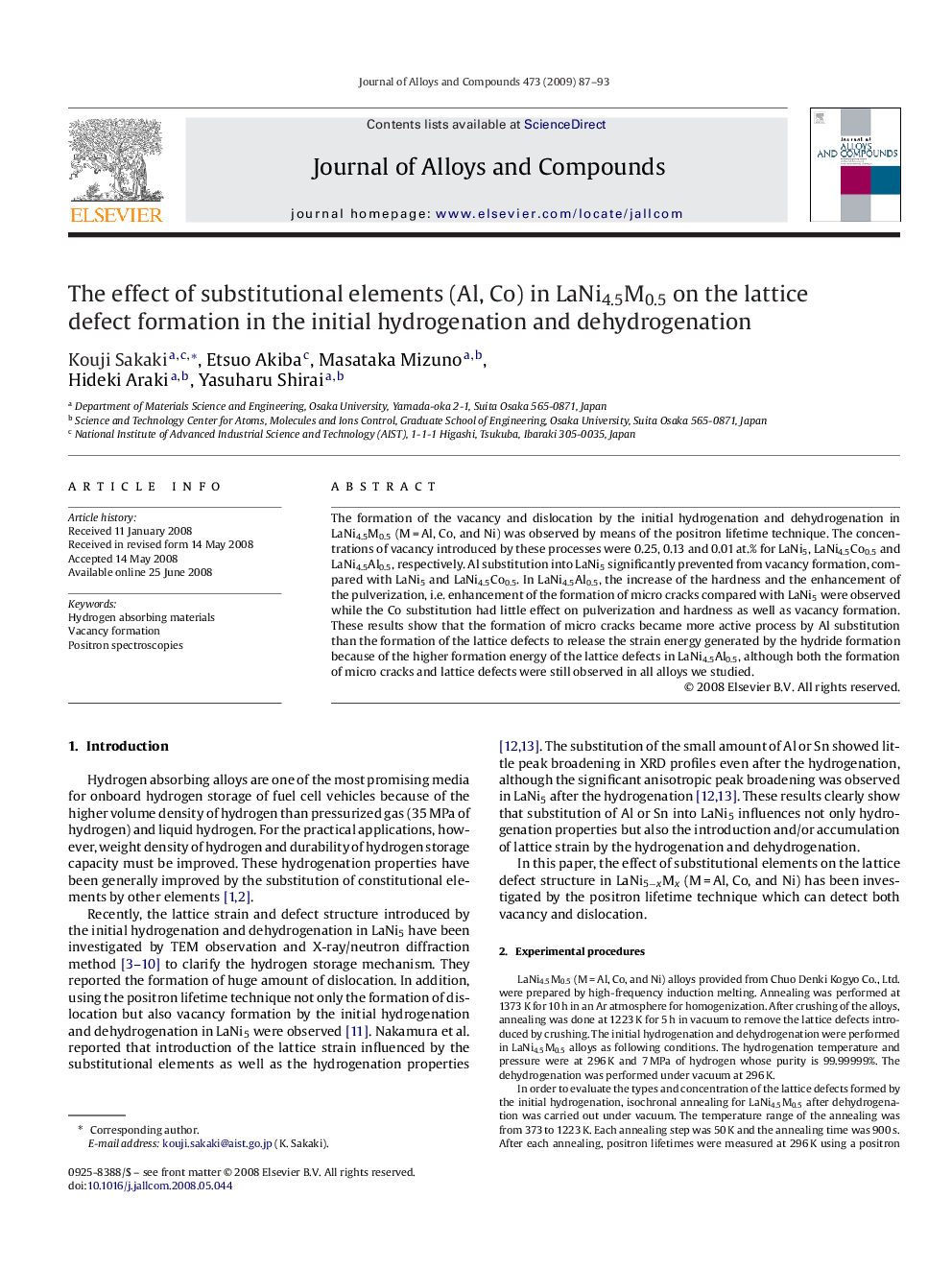| Article ID | Journal | Published Year | Pages | File Type |
|---|---|---|---|---|
| 1622312 | Journal of Alloys and Compounds | 2009 | 7 Pages |
Abstract
The formation of the vacancy and dislocation by the initial hydrogenation and dehydrogenation in LaNi4.5M0.5 (MÂ =Â Al, Co, and Ni) was observed by means of the positron lifetime technique. The concentrations of vacancy introduced by these processes were 0.25, 0.13 and 0.01Â at.% for LaNi5, LaNi4.5Co0.5 and LaNi4.5Al0.5, respectively. Al substitution into LaNi5 significantly prevented from vacancy formation, compared with LaNi5 and LaNi4.5Co0.5. In LaNi4.5Al0.5, the increase of the hardness and the enhancement of the pulverization, i.e. enhancement of the formation of micro cracks compared with LaNi5 were observed while the Co substitution had little effect on pulverization and hardness as well as vacancy formation. These results show that the formation of micro cracks became more active process by Al substitution than the formation of the lattice defects to release the strain energy generated by the hydride formation because of the higher formation energy of the lattice defects in LaNi4.5Al0.5, although both the formation of micro cracks and lattice defects were still observed in all alloys we studied.
Related Topics
Physical Sciences and Engineering
Materials Science
Metals and Alloys
Authors
Kouji Sakaki, Etsuo Akiba, Masataka Mizuno, Hideki Araki, Yasuharu Shirai,
